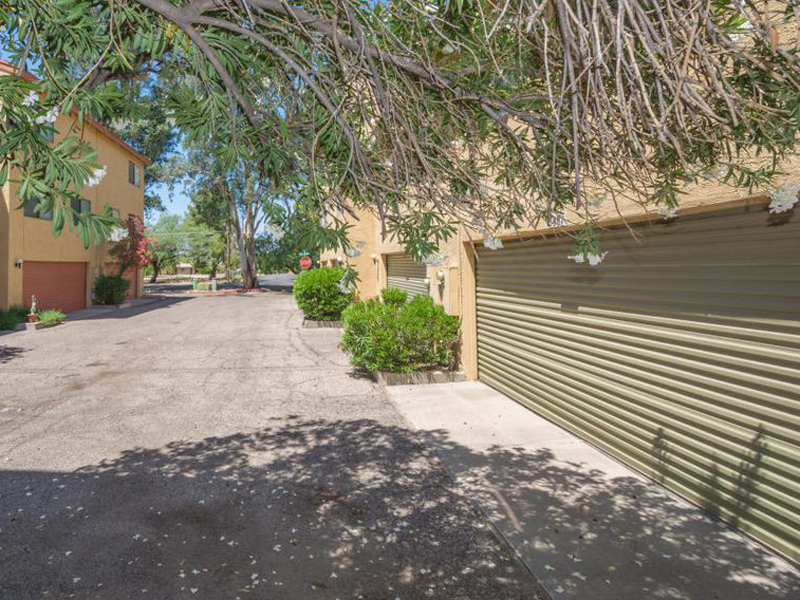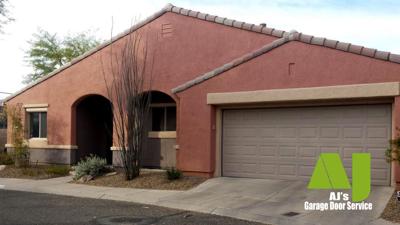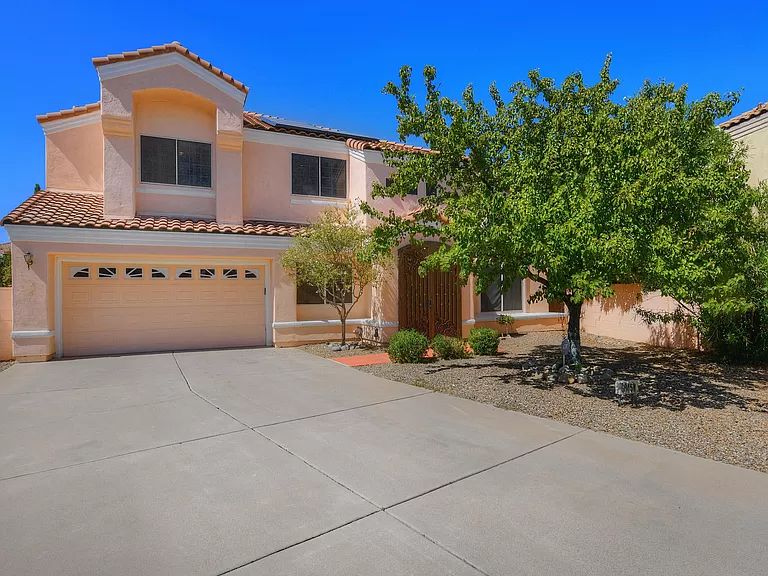Is Your Garage Door Stuck? Below's What to Do Initial
When your garage door will not open up, begin with these crucial safety and security checks before trying any repairs. Initially, make sure no one is standing near the door which automobiles are clear of the opening. Try to find noticeable indications of damage like busted panels, bent tracks, or hanging cable televisions. If you see a snapped spring or seriously harmed elements, stop promptly and call a professional—-- these fixings call for specific devices and know-how to handle safely.

Inspect These 6 Points Before Calling a Professional
Prior to assuming you require pricey repairs, go through this fast analysis checklist that resolves most garage door issues:
-
Power source: Validate the opener is connected in and the outlet is functioning
-
Remote batteries: Change dead batteries in your remote control
-
Manual lock: Examine if someone mistakenly engaged the manual lock
-
Blockages: Look for debris obstructing the door's path or sensing units
-
Emergency launch: Guarantee the red emergency situation cord hasn't been drawn
-
Breaker: Verify the garage circuit hasn't tripped
These basic checks solve around 70% of garage door problems without calling for expert intervention.
10 Usual Factors Your Garage Door Won't Open
Comprehending why your garage door opener isn't functioning aids you pick the appropriate solution. Here are the most constant reasons house owners experience:
Dead remote batteries represent the easiest solution—-- when batteries die, the remote can not send out signals to the opener. Power blackouts or stumbled breakers reduced electrical energy to the electric motor. Broken springtimes avoid the door from raising correctly and need instant specialist attention. Sensor misalignment reasons safety and security systems to obstruct door procedure. Track obstructions quit rollers from relocating efficiently. Motor overload triggers automated shutoffs when the opener spots resistance. Restriction button issues perplex the opener regarding door placement. Wire damage disrupts the training mechanism. Weather-related concerns impact door movement throughout severe temperatures. Component wear from age slowly decreases system performance.
Trouble # 1: Dead Push-button Control Batteries
When your wall surface button functions however your remote does not, dead batteries are usually the culprit. Most garage door remotes utilize either 3-volt lithium or 12-volt alkaline batteries. Remove the back cover of your remote and check the battery type. Change with fresh batteries and test the remote. If it still does not function, you may need to reprogram it to your opener. Consult your opener's manual for certain reprogramming guidelines, as the procedure varies by maker.
Trouble # 2: Power Supply Issues
Garage door power issues frequently come from loosened connections or stumbled circuits. Inspect that the opener is strongly plugged into its electrical outlet—-- resonance can loosen up connections in time. Test the electrical outlet with another gadget to confirm it's working. Analyze your home's breaker box for tripped circuits, specifically if you've experienced tornados or power fluctuations. GFCI electrical outlets may have tripped and require read more resetting. If the opener has power but will not respond, the concern most likely lies somewhere else in the system.
Issue # 3: Broken or Damaged Springs
Damaged garage door springs are among one of the most dangerous parts to handle. If you hear a loud bang from your garage or observe the door really feels exceptionally heavy when attempting to raise by hand, a spring has most likely snapped. Torsion springs run horizontally over the door, while expansion springtimes remain on either side. Never ever try spring repairs on your own—-- these parts store tremendous stress that can create significant injury or fatality. Expert replacement generally costs $150-$300 but guarantees your safety and security.
Trouble # 4: Obstructed Security Sensing Units
Modern garage doors feature safety and security sensors that avoid closure when things are detected. These sensors can stop the door from opening if they're unclean, misaligned, or blocked by particles. Tidy sensing unit lenses with a soft fabric and guarantee absolutely nothing blocks the unseen beam in between them. Inspect that sensing units are appropriately straightened—-- many have indicator lights that reveal link standing. Sensor problems often fix with basic cleansing and adjustment.
Issue # 5: Track Obstructions or Damages
Garage door tracks guide rollers as the door moves up and down. Dirt, debris, old grease, or tiny objects can jam the system. Inspect tracks visually and eliminate any type of obstructions with a brush or cloth. Search for dents, flexes, or warping that might restrain smooth procedure. Minor track changes are feasible for handy homeowners, yet significant damage calls for expert repair work to avoid additional problems or safety hazards.
Problem # 6: Garage Door Opener Motor Issues
When the garage door motor runs yet the door doesn't move, a number of problems could be liable. The electric motor might be overwhelmed and shutting off as a safety measure. Equipment wear, especially in older units, can prevent proper procedure. Chain or belt drive issues influence power transmission. If you listen to uncommon grinding, clicking, or humming sounds, quit using the opener immediately. Electric motor repairs often cost more than replacement, specifically for devices over one decade old.
Step-by-Step Do It Yourself Troubleshooting Guide
Follow this organized approach to garage door repairing while focusing on safety throughout the process:
Action 1: Check the wall button first. If it works however the remote does not, focus on remote issues. If neither works, check power supply.
Step 2: Examine the hand-operated release cord. If it's been drawn, the opener is disengaged from the door. Press the trolley back to reconnect.
Step 3: Manually evaluate the door by disengaging the opener and trying to raise the door by hand. It needs to move smoothly and stay in area when half-open.
Step 4: Evaluate visible parts for damages, paying unique interest to springtimes, cable televisions, and tracks.
Tip 5: Examine all safety and security features consisting of sensing units, limit switches, and auto-reverse features.
Step 6: Test different controls (remote, wall surface button, keypad) to separate the issue source.
Always wear safety glasses and job gloves when executing evaluations, and never ever attempt repair work on springtimes or high-tension components.
When to Call a Professional vs. do it yourself Solutions

Recognizing when to call a garage door expert versus attempting do it yourself fixings secures both your security and your budget. Take care of these issues on your own: dead remote batteries, power supply troubles, minor track cleansing, sensor cleansing and placement, and basic lubrication.
Never attempt these repair work on your own: spring substitute or change, cable repair services, major track adjustment, electrical wiring problems, opener electric motor substitute, or any repair work including high-tension components. Expert professionals have specialized tools, training, and insurance to deal with hazardous repair work securely.
Consider repair service prices versus replacement expenses, especially for doors over 15 years old. Modern garage doors supply better security functions, energy effectiveness, and reliability than older models.
Emergency Garage Door Solutions
When you're stuck to a garage door that will not open and require instant access, adhere to these emergency situation procedures:
Handbook Operation: Pull the red emergency launch cord to disengage the opener. This allows hand-operated procedure but needs correct strategy to prevent injury. Raise the door slowly and equally, utilizing leg muscles rather than your back. Most domestic doors weigh 100-150 extra pounds, making them manageable for a lot of grownups.
Momentary Fixes: If the door opens by hand yet won't keep up, prop it open with sawhorses or clamps—-- never ever utilize your body or vehicles as assistances. For doors that won't shut totally, make certain the opening is safeguarded if you have to leave.
Emergency Service: Many garage door firms use 24/7 emergency situation service for scenarios involving safety and security problems, caught automobiles, or total system failures. While a lot more costly than regular solution calls, emergency situation repair work supply prompt remedies when required most.
Security Warning: What NOT to Do
Garage door safety calls for understanding hazardous repairs that need to never be attempted by property owners:
Never try to repair springtimes—-- they store sufficient energy to trigger fatal injuries when they break or are improperly handled. Do not force a stuck door—-- this can damage the opener, tracks, or door panels, producing a lot more pricey issues. Prevent bypassing security attributes—-- sensors and auto-reverse devices stop serious injuries and residential property damage.
Do not disregard odd noises—-- grinding, scuffing, or banging audios indicate problems that intensify gradually. Never ever make use of the door if cables are torn or broken—-- the door can fall unexpectedly. Do not try electrical repairs unless you're a qualified electrical expert—-- garage door openers utilize both 120V home present and low-voltage control circuits.

Preventive Maintenance to Avoid Future Troubles
Routine garage door upkeep avoids most typical issues and prolongs system life-span substantially:
Month-to-month Tasks: Visual examination of all parts, checking auto-reverse security attributes, checking and tightening equipment, and cleansing tracks and sensors.
Quarterly Tasks: Oiling all moving get rid of ideal garage door lubricating substance, testing guidebook operation, and examining weather condition securing.
Annual Tasks: Professional evaluation and tune-up, springtime change if required, and opener maintenance consisting of belt or chain adjustment.
Seasonal Tasks: Getting ready for weather extremes, examining insulation, and adjusting opener settings for temperature level adjustments.
Regular upkeep expenses far less than emergency situation fixings and makes sure trusted operation year-round.
Garage Door Won't Open Up Frequently Asked Questions
Why won't my garage door open with the remote but deals with the wall button?
This generally suggests dead remote batteries, signal interference, or the requirement to reprogram the remote. Examine batteries initially, after that consult your opener guidebook for reprogramming directions.
Can I by hand open my garage door if the power is out?
Yes, draw the red emergency situation release cable to disengage the opener, after that lift the door manually. Be planned for the door's complete weight and lift with correct technique to prevent injury.
Exactly how do I know if my garage door springtime is damaged?
Indicators include a loud bang from the garage, the door sensation very hefty when lifting by hand, visible spaces in the springtime coils, or the door just opening a couple of inches before quiting.
Is it safe to use my garage door if it will not open all the way?
No, partial procedure suggests mechanical issues that could aggravate unexpectedly. Quit using the door and have it inspected by an expert to avoid additional damage or injury.
What should I do if my garage door opens but will not shut?
Examine security sensing units for blockages or misalignment, check out the tracks for debris, and check the auto-reverse feature. If these do not solve the trouble, get in touch with a specialist.
How much does it cost to take care of a garage door that won't open?
Expenses vary commonly depending upon the issue: battery substitute ($5-$10), professional diagnosis ($50-$100), springtime replacement ($150-$300), or opener substitute ($200-$500).
Can weather affect my garage door's capability to open up?
Yes, severe cold can thicken lubricating substances and influence steel components, while warmth can cause growth concerns. Most issues resolve as temperature levels normalize, yet persistent problems may need specialist focus.
Why does my garage door open a few inches then stop?
This typically indicates broken springtimes, restriction button problems, or track blockages. The opener's security features quit operation when resistance is discovered, stopping damage to the motor or door.
Obtain Specialist Aid for Complex Issues
When DIY repairing does not solve your garage door problems, professional technicians supply the know-how and devices needed for risk-free, lasting repair work. Qualified specialists diagnose problems properly, use manufacturer-approved components, and supply warranties on their job.
Specialist solutions consist of: detailed system assessments, springtime and cable replacement, opener repair service and substitute, track alignment and substitute, electrical troubleshooting, and emergency service phone calls.
What to expect: in advance rates, accredited and insured specialists, same-day solution for numerous repair services, and follow-up maintenance recommendations.
The majority of garage door companies supply complimentary price quotes for significant fixings and can supply instant services for urgent problems affecting home safety and security or car access.
Getting Your Garage Door Working Again
A garage door that won't open up does not need to destroy your day or damage your budget plan. Begin with basic troubleshooting actions like inspecting power, changing batteries, and taking a look at for noticeable obstructions. Numerous issues have quick do it yourself remedies that bring back regular operation within minutes.
However, acknowledge when specialist assistance is required—-- especially for spring-related concerns, electrical troubles, or complicated mechanical failings. Attempting dangerous fixings on your own takes the chance of serious injury and often creates much more pricey issues.
Regular maintenance stops most garage door concerns and makes sure dependable procedure for years ahead. When troubles do happen, address them quickly to stay clear of more expensive repairs and maintain your home's protection and benefit. Whether you need a basic battery substitute or total system overhaul, remedies exist to obtain your garage door working efficiently once again.